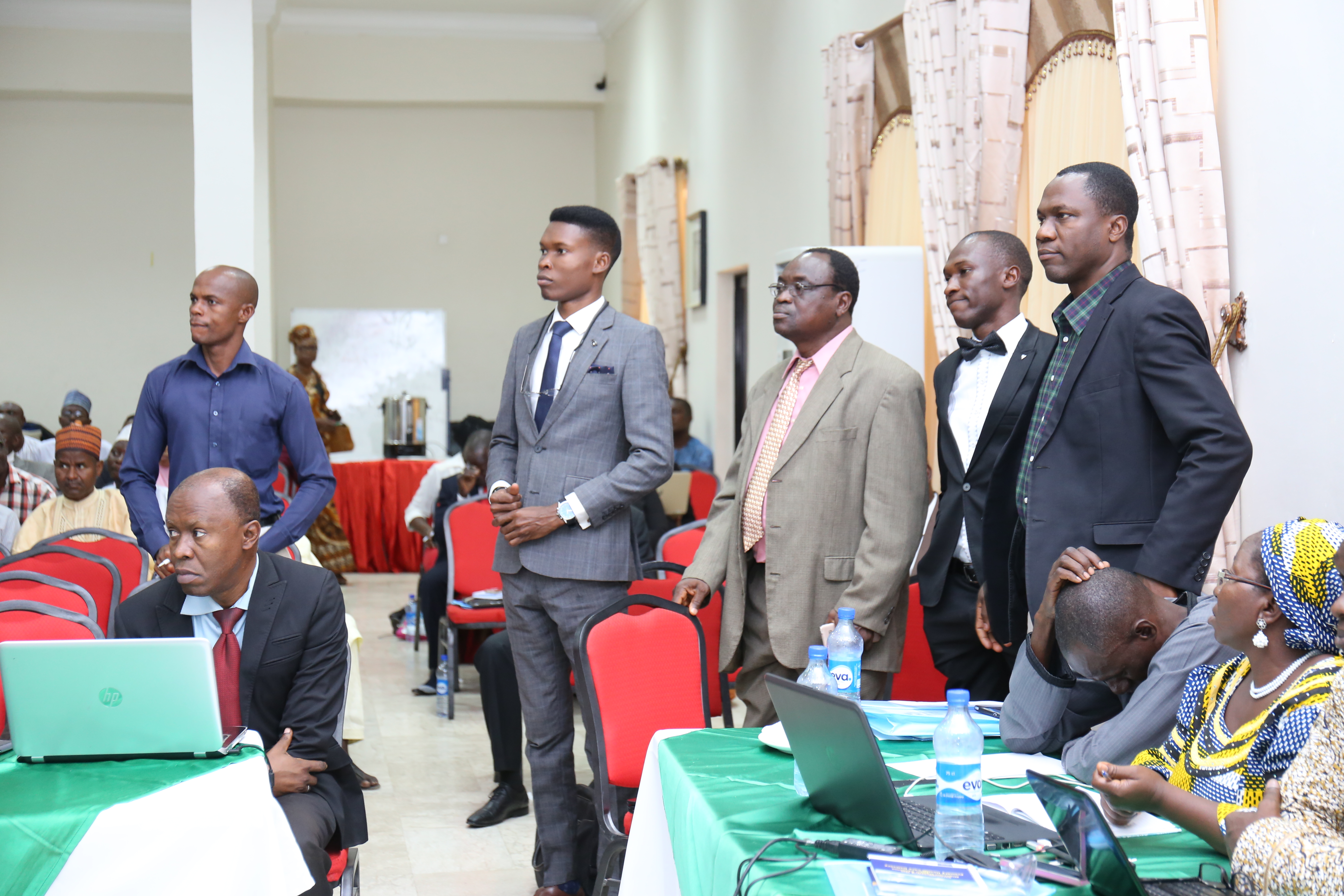Presentation of CHECOD Team during the NHA 2010 – 2014 Stakeholders Validation by FMoH.
1. Background
Over the last three years, State Governments have made significant progress in improving the management of their public finances. In some States, the yearly Budget is prepared within the Medium Term Expenditure Framework (MTEF) in compliance with the State Fiscal Responsibility Amendment Law and with the newly adopted National Format and Chart of Accounts and the International Public Sector Accounting Standards (IPSAS). These States have adopted the initial steps towards preparing annual budgets within a Medium term Expenditure Framework (MTEF). However, public finance management reform is a long-term process and should be systematically conducted in stages1. The Governments’ success in designing and implementing a comprehensive reform program will depend fundamentally on its capacity to strengthen the institutional framework in which those policies are conceived, decided upon, and executed. And within this institutional framework, remodeling public finance management structures will be strategic because there is urgent need for change now.
However, many critical aspects of financial management remain to be addressed by State governments. So far public spending has been only partly effective in delivering services, while significant risks of untimely release, misallocation and misuse of funds continue to exist. The Current Budget remains incremental in the absence of clear criteria for resource allocation. Non-wage operations and maintenance allocations are insufficient, and salaries and debt servicing dominate current spending. The Capital Budget needs rationalization to consolidate the investment portfolio2 and improve project appraisal, execution and monitoring. Contractor and pension arrears remain considerable, and there is no system in place to ensure their timely repayment. This is the present situation with the public expenditure management in the health sector of many states.
State Governments are also working for further improvements in budget preparation and execution by making future budgets consistent with various related global, national and state strategic policy initiatives via the Medium Term Expenditure Framework (MTEF). The goal is to develop a budget system capable of more effective implementation of the state’s fiscal policy, attaining its allocative and spending effectiveness objectives, while raising transparency and strengthening accountability in the budget process. They are aspiring to work towards a budget system which can cope with the volatility of oil revenues and facilitates sustainable levels of spending over the medium term while maintaining domestic and external debt at prudent levels. Some of the states’ strategic plan clearly articulated government’s readiness to strengthen accountability, transparency and responsiveness of the national health system. At the same time, these States are conscious of the capacity constraints for their operations, and want to ensure that budget reforms move hand in hand with the building of necessary skills of all line ministries, departments and agencies (MDAs). Thus it will need to work closely to establish effective partnership with local and international partners to support its public sector governance reform efforts.
Similarly, all State Ministries of Health (SMOHs) have developed their State strategic health development plans (SSHDPs) – well-articulated vision of policies and spending priorities, which are
only roughly costed and not well integrated with existing spending patterns. In last four years, their financial allocations to the health sector have increased dramatically but not actual disbursement. Since available resources for the implementation of these strategic plans will be sourced primarily from the State Governments, they will not be enough to implement a quarter of the proposed activities in the plans. So mechanisms are needed to help the SMOH integrate their SSHDPs program priorities with current spending, mobilize resources through various innovative sources and ensure consistency within an aggregate framework of sustainable spending. For some states, roughly 90% of the state’s revenues derive from transfers from the Federation Account (chiefly oil revenues), and the other 10% is raised through local taxation, chiefly income tax. Furthermore, with prolonged insurgency and conflicts, staff skills have been eroded, and there is a pressing need to build capacity both in terms of modern budget concepts and necessary basic skills for the preparation and implementation of a fiscally sustainable Budget using MTEF/MTSS as well as use of IT in budget preparation and monitoring, and project and program analysis. Indeed, the availability of centrally accessible electronic database accounts network system in some of the states becomes an important priority.
2. Objectives of the Assignment
The overall goal is to strengthen the institutional capacity of SMoH in the states to innovatively mobilize resources and use public resources more effectively, efficiently and transparently, in line with Government priorities. Specifically, the objective of the project is to build capacity in the states to prepare and implement budgets within a MTEF/MTSS, helping the ministries in particular to develop fiscally sustainable budget in the context of revenue uncertainty, volatility and insurgency, ensure State strategic development plan priorities are reflected in annual budgets, and projects and programs are realistically costed and delivered efficiently. The analysis and recommendations are intended to demonstrate how SMOHs and donor resources are currently used; the level of support to the health sector in attracting funding; guiding resources allocation and expenditure and to recommend how to improve their usage.
1 Comprehensive interventions are desirable and preferable because the components are intertwined. They should be well defined and conducted systematically to have full impact.
2 Development of Investment Case for the health sectors of these states is required. Lagos State Investment Case for the health sector is a classic example.

